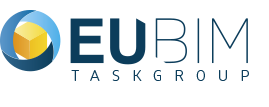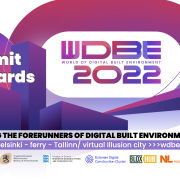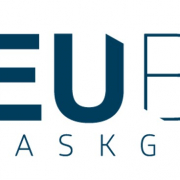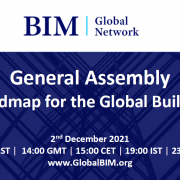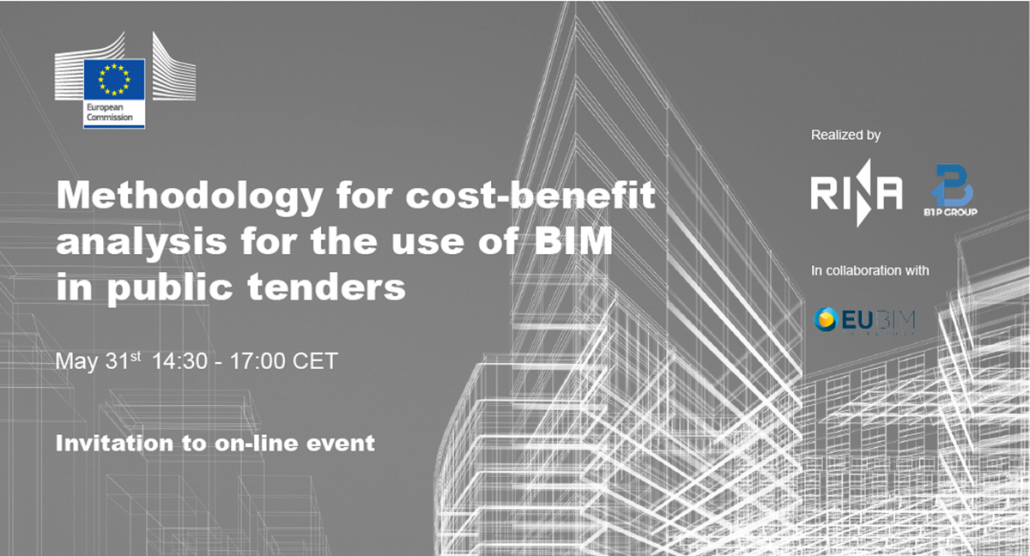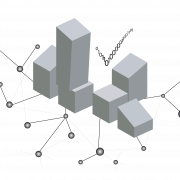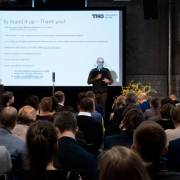The EU BIM Task Group General Assembly for 2020 was held on 15th of December 2020 on-line. Below is a summary of the discussions and presentations.
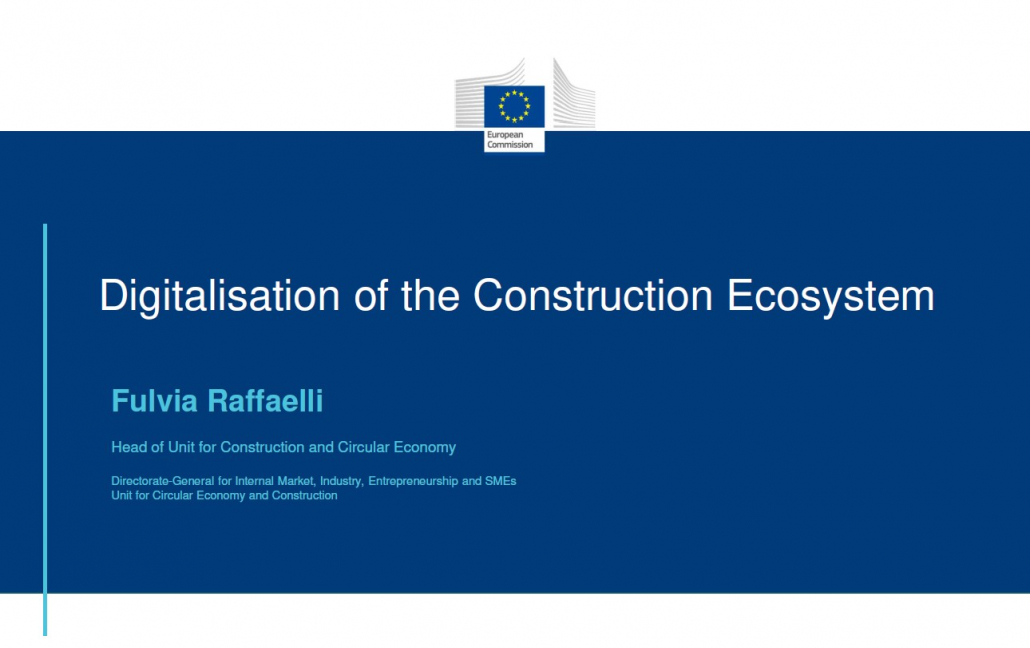
“Digitalisation of the Construction Ecosystem”
Fulvia Raffaelli, Head of Unit “Clean Technologies and Products” (DG GROW)
Download presentation
Fulvia Raffaelli starts her presentation saying that since the last General Assembly in 2019, there have been many policy developments in the area of Construction and digital construction particularly.
Indeed, as part of the European Green Deal many initiatives have highlighted the importance of the construction sector through notably the announcement of the Construction Products Regulation revision (in the Circular Economy Action Plan) and the Renovation Wave strategy.
The renovation wave aims at doubling the rate of renovations and decarbonising the European Building stock. It also aims at contributing to the green and digital transition in Europe from the side of buildings and construction. In that context, three areas of action mentioned in the Renovation Wave are of particular interest for the EU BIM Task Group members: the digital building logbooks, the digital building permits, and the spread of the use of BIM for public procurement and beyond.
Regarding the digital building logbooks, they will address the challenges of data availability in the construction sector and increase transparency, trust and informed decision-making. The Commission envisages logbooks as the single tool through which all building-related data, information and documents will be accessed in fair and European terms. Logbooks should be secure tools that allow owners to have control over their own data as well as digital and dynamic, able to keep and update a record of all events in the life of a building.
As mentioned in the Renovation Wave, Logbooks should make use and link to existing platforms and tools, including Energy Performance Certificates, the Smart Readiness Indicators, renovation passports and others.
In the years to come, the Commission will continue working on the further definition of the datasets and functionalities of logbooks, as well as on the interoperability between different tools and platforms. The goal is to digitalise the built environment, and grasp the benefits of data, not only for collaboration and convenience, but also for resource efficiency, safety and the creation of new business models and opportunities.
This also requires research and innovation, for this reason, Fulvia Raffaelli’s unit with other services and the Member states have been involved in the definition of the Horizon Europe Work Programme.
Another action announced in the renovation wave is the digitalization of the building permits. The discussions with construction stakeholders and authorities revealed that more research and innovation projects could contribute to an EU Framework.
Finally, through the Renovation Wave, the Commission expressed its commitment to accelerate adoption of BIM in public procurement. In the course of 2021 and 2022, the EU BIM Task Group will be called upon in order to develop and provide a Commission Recommendation.
In the meantime, in collaboration with the Chair and co-chair of the Group and through a service contract, a model to conduct cost-benefit analysis for the use of BIM in public procurement is under development. This model will be made available to all public procurers across Europe by May 2021.
Digitalization of construction depends as well on the industry. As part of the Digital Europe Programme there will be support for Digital Innovation Hubs and Testing and Experimentation Facilities, which subject to the commitment and orientations of the Member states can contribute to the digitalization of construction SMEs and the industry in general.
During 2021 and 2022, DG GROW will be working particularly on the development of a digital maturity scan for construction SMEs, an interactive guidebook and on site trainings to help SMEs network, become aware of the possibilities, receive support and digitalise.
As a conclusion, Fulvia Raffaelli underlines the fact that the diverse situation across different Member States is something to look into, and through the exchange of good practices can become our strength. As part of the European Construction Sector Observatory, a new Analytical report will be produced on the digital transformation of construction, looking at both the transformation of industry and public administration.
Election of the Chair, Deputy chairs and new Steering Committee
The possibility of having two Deputy Chairs proposed by the Steering Committee is unanimously adopted.
A drafting amendment of the governance document is proposed by Spain to replace the one presented and approved by all the members:
“… up to three of its members to respectively act one as the Chair and up to two as Deputy Chairs of the EU BIM TG. The term of office of the Chair and the Deputy Chairs is two years. The term is renewable once.”
The following Steering Committee’s proposal for the nomination of the chair and Deputy-chairs:
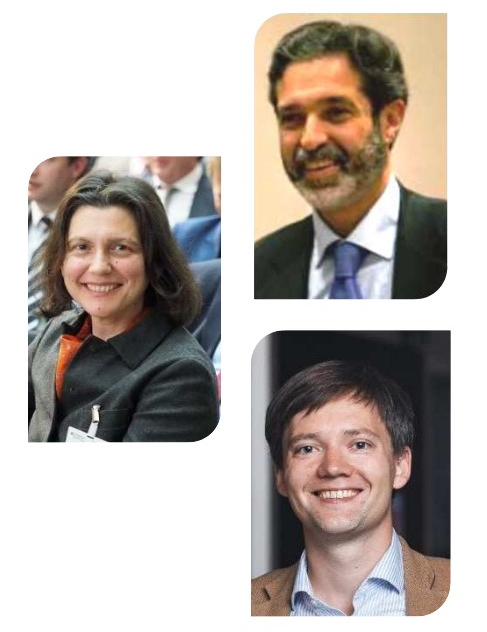
- Souheil Soubra / Chair of the EU BIM TG
Director of Information Technologies at CSTB (Scientific and Technical Centre for Buildings)
- Milena Feustel / Deputy Chair of the EU BIM TG
German Institute for Federal Real Estate
- Jaan Saar / Deputy Chair of the EU BIM TG
Head of Digital Construction – Estonian Ministry of Economic Affairs and Communications
Is accepted by unanimity.
The Steering Committee’s proposal for the nomination of its members:
- CZ: Jaroslav Nechyba
- DE: Milena Feustel (Deputy Chair)
- EE: Jaan Saar (Deputy Chair)
- ES: Susana Espana (Jorge Torrico)
- FR: Sara Angotti
- IT: Pietro Baratono (Cinzia Gatto)
- LT: Dainius Cergelis
- NL: Benno Koehorst
- NO: Ramnath Falch Ambathy
- + Chair: Souheil Soubra
Is accepted by unanimity.
The Steering Committee’s proposal to appoint Liana Anagnostaki, TCG’s Head Directory of Public Relations, International and European Affairs (GR) as a new member of the Steering Committee is also accepted.
Tarmo Savoleinen’s application (FI) for the vacant position is also accepted during the session.
Regarding the United Kingdom’s situation in the European Union, all the members of the General Assembly support the proposal to continue the close cooperation under special partnership and to mandate the Steering Committee to finalise the special partnership agreement.
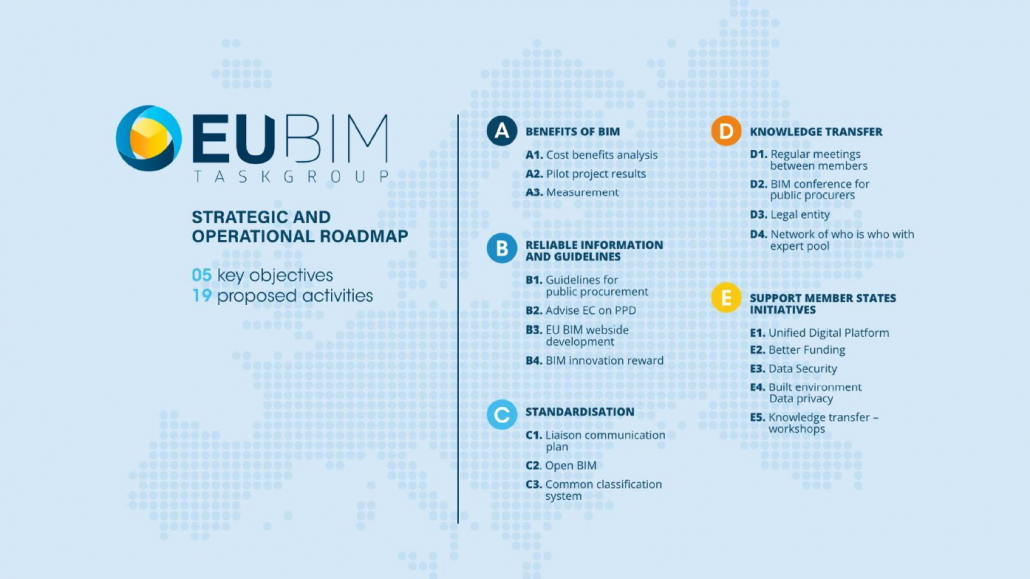
Progress on the Roadmap actions
Presentations are made to update the following topics (download presentations):
A1 – Cost Benefit Analysis
by Milena Feustel
See also detailed presentation “BIM in Public Tenders: Methodology for a Cost-Benefit Analysis” by RINA Consulting.
Milena Feustel thanks in advance the members who agreed to answer the questionnaire sent by the Italian consulting company Rina before the end of January.
Finland would like to propose one out of the planned 6 use cases.
C3 – Common Classification System
by Jaan Saar
Spain will get in touch with CCIC to exchange views on the development of a Spanish classification system for railway infrastructures.
E1 – Unified Digital Platform (H2020 project DigiPLACE)
by Claudio Mirarchi (Polimi)
Follow this link to become a member of DigiPLACE Community of Stakeholders.
Suggestions for 2021 actions and AOB
Germany suggests, in the framework of the renovation wave cooperation action with DG Grow, to extend BIM to already existing buildings.
Charlie (Luxembourg) also suggests extending it to demolition and deconstruction processes.
A specific Task Force will be launched about renovation and deconstruction. The SC will send proposal to the GA for the organisation. Charlie is already interested.
UK announces that the next Global BIM Summit will take place online on 17 March 2021 (https://www.globalbimsummit.org/) and that contributions could be requested from the EUBTG members.
List of pariticpants:



